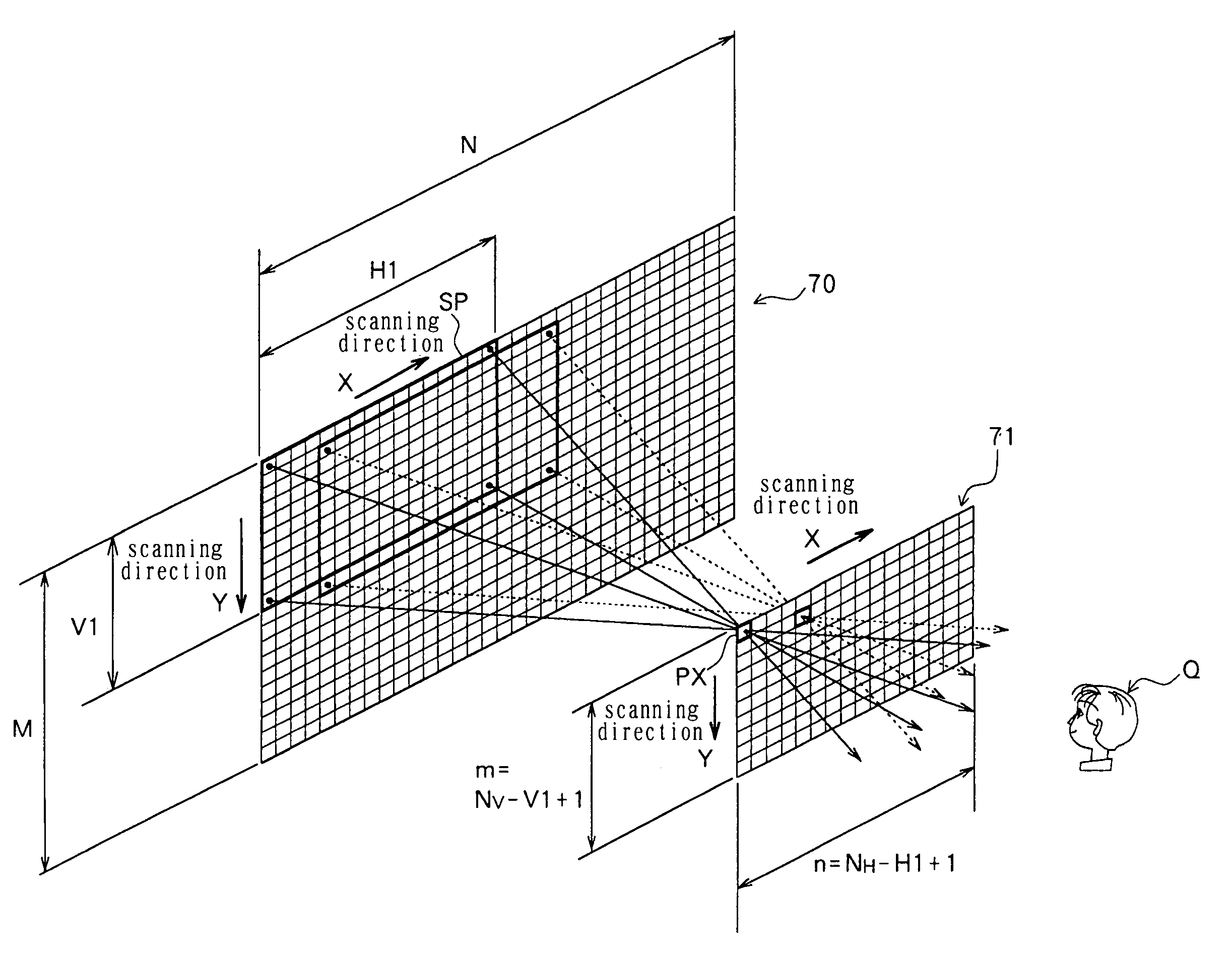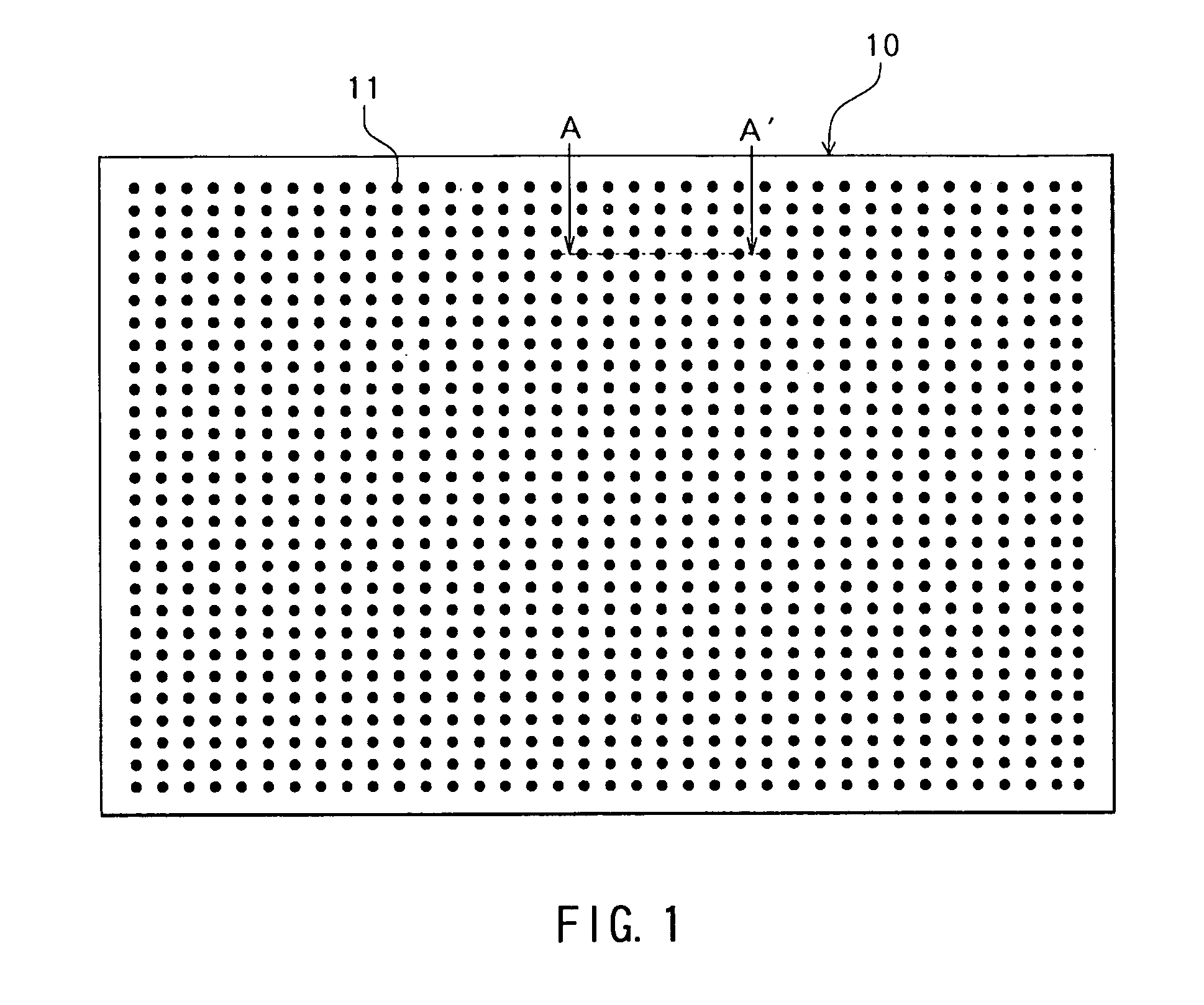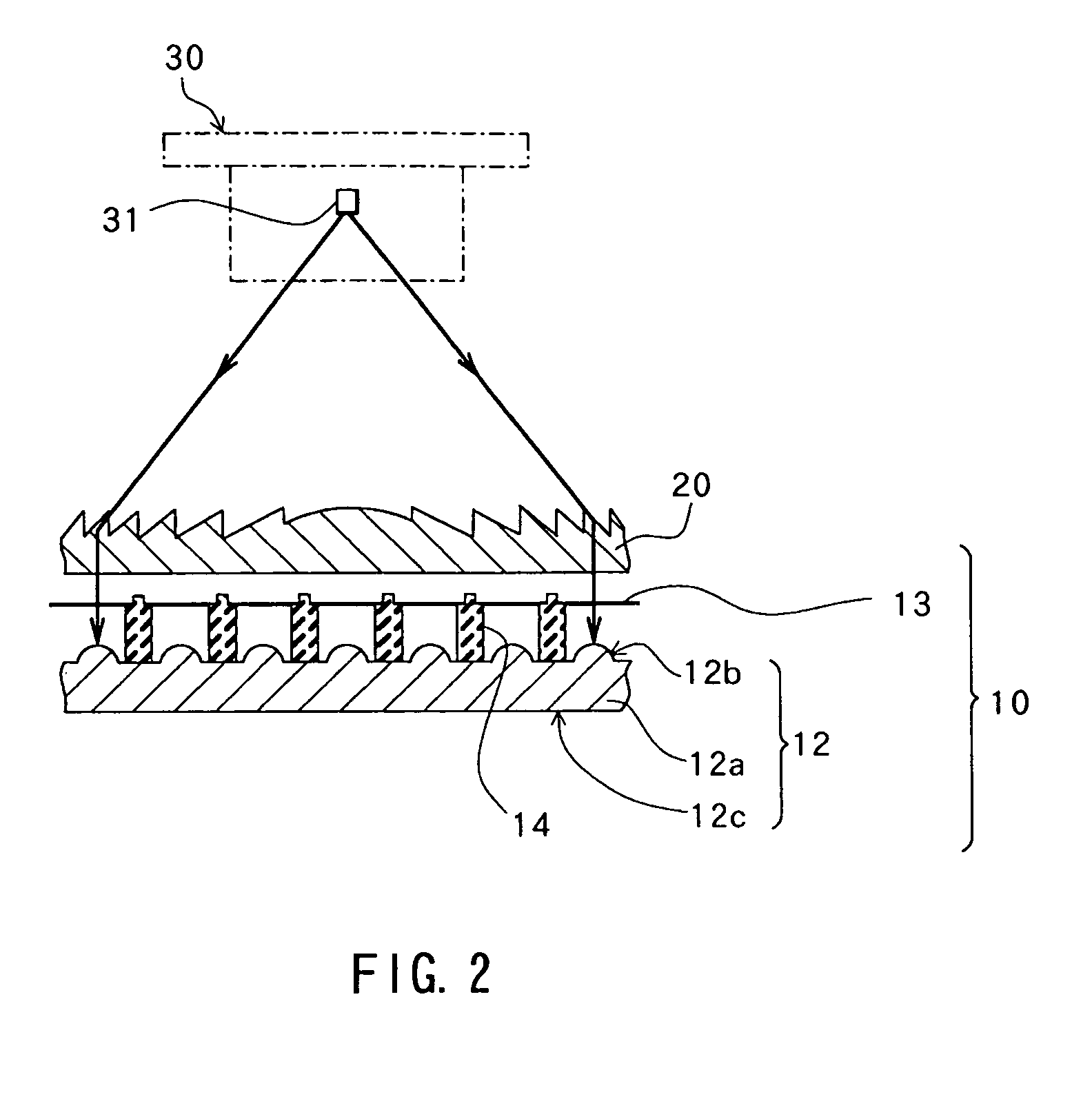Three-dimensional image display
a three-dimensional image and display technology, applied in the field of three-dimensional image display, can solve the problems of high manufacturing cost, inconvenient viewing for stereoscopic viewers, and not allowing three-dimensional display in a true sens
- Summary
- Abstract
- Description
- Claims
- Application Information
AI Technical Summary
Benefits of technology
Problems solved by technology
Method used
Image
Examples
first embodiment
[0146]FIG. 1 shows a frontal structure of a three-dimensional screen forming a part of a three-dimensional image display according to the present embodiment. FIG. 2 shows a sectional structure of the three-dimensional image display taken along the line A-A′ in FIG. 1. FIG. 3 is an enlarged view of a part of the sectional structure of the three-dimensional display screen shown in FIG. 2. As shown in FIG. 1, the three-dimensional display screen 10 has screen dots 11 arranged in the form of a matrix at constant intervals in each of the horizontal direction (lateral direction of the figure) and the vertical direction (vertical direction of the figure). As shown in FIGS. 2 and 3, the three-dimensional display screen 10 has: a multiplicity of light diffusing elements 12 formed of a transparent material that allows visible light to pass through with substantially no loss and arranged in the form of a matrix; and liquid crystal display elements (hereinafter referred to as “LCDs”) 13 provide...
second embodiment
[0186]A second embodiment of the invention will now be described.
[0187]FIG. 21 shows a schematic configuration of a three-dimensional image display according to a second embodiment of the invention. The three-dimensional image display has an LCD panel 61 formed by arranging a plurality of LCDs 60 in each of the horizontal and vertical directions and has a three-dimensional display screen 63 which has a configuration including a plurality of pinhole elements 62 and which is provided in parallel with the LCD panel 61 in a face-to-face relationship with the same. A diffusing plate and a light source portion which are not shown are provided behind the LCD panel 61. Although FIG. 21 shows the LCD panel 61 and three-dimensional screen 63 as being spaced at a considerable interval for convenience, they may be provided closer. The LCD panel 61 corresponds to the “two-dimensional image forming element” of the invention.
[0188]Each of the LCDs 60 is formed by arranging H pixels in the horizont...
third embodiment
[0201]A third embodiment of the invention will now be described.
[0202]While the three-dimensional image display of the second embodiment can achieve high definition in representing an image to be viewed by the viewer Q at each view point, the angular resolution is lower than that in the first embodiment because the pinhole elements 62 of the three-dimensional display screen 63 must be arranged at a large pitch D (FIG. 21), which can result in a phenomenon that a stereoscopic image appears or disappears each time the viewer Q changes the view point. In order to eliminate such a problem, the present embodiment makes it possible to improve angular resolution. A detailed description on the embodiment will now be made with reference to FIGS. 24 through 28.
[0203]FIG. 24 shows a schematic configuration of a three-dimensional image display according to a third embodiment of the invention. The three-dimensional image display has: a picture LCD panel 70 including a multiplicity of pixels in t...
PUM
 Login to View More
Login to View More Abstract
Description
Claims
Application Information
 Login to View More
Login to View More - R&D
- Intellectual Property
- Life Sciences
- Materials
- Tech Scout
- Unparalleled Data Quality
- Higher Quality Content
- 60% Fewer Hallucinations
Browse by: Latest US Patents, China's latest patents, Technical Efficacy Thesaurus, Application Domain, Technology Topic, Popular Technical Reports.
© 2025 PatSnap. All rights reserved.Legal|Privacy policy|Modern Slavery Act Transparency Statement|Sitemap|About US| Contact US: help@patsnap.com



